Cubism with a twist (of the wrist)
Starting with his first Rubik, Winnipegger paints a masterful career in 3D puzzles
Advertisement
Read this article for free:
or
Already have an account? Log in here »
To continue reading, please subscribe:
Monthly Digital Subscription
$0 for the first 4 weeks*
- Enjoy unlimited reading on winnipegfreepress.com
- Read the E-Edition, our digital replica newspaper
- Access News Break, our award-winning app
- Play interactive puzzles
*No charge for 4 weeks then price increases to the regular rate of $19.95 plus GST every four weeks. Offer available to new and qualified returning subscribers only. Cancel any time.
Monthly Digital Subscription
$4.99/week*
- Enjoy unlimited reading on winnipegfreepress.com
- Read the E-Edition, our digital replica newspaper
- Access News Break, our award-winning app
- Play interactive puzzles
*Billed as $19.95 plus GST every four weeks. Cancel any time.
To continue reading, please subscribe:
Add Free Press access to your Brandon Sun subscription for only an additional
$1 for the first 4 weeks*
*Your next subscription payment will increase by $1.00 and you will be charged $16.99 plus GST for four weeks. After four weeks, your payment will increase to $23.99 plus GST every four weeks.
Read unlimited articles for free today:
or
Already have an account? Log in here »
Hey there, time traveller!
This article was published 08/02/2020 (2164 days ago), so information in it may no longer be current.
A fateful decision he didn’t know would radically change his life is how John Haché dramatically describes the morning 12 years ago when he asked his father to drive him to Kildonan Place so he could purchase a Rubik’s Cube.
“I can’t even remember why I wanted one in the first place; maybe I’d seen somebody playing with one on TV or in a movie and it just looked like fun,” says the 26-year-old mechanical engineering technologist, seated in the North Forge Fabrication Lab, an Exchange District facility that serves as the unofficial headquarters of the Winnipeg Puzzle Club, a loosely organized group of individuals who, like himself, get a kick out of deciphering three-dimensional brainteasers such as Rubik’s Cubes.
Well, not only did Haché persuade his dad to escort him back to the mall the following weekend to buy a second cube, one with a different colour scheme this time, he did so the week after that and the week after that. Some 800 puzzles later, it’s safe to say Haché has the largest collection of 3D puzzles, also called mechanical puzzles, in the city, perhaps the country, examples of which draw oohs and ahhs from other “cubers” in the room who are witnessing the broad scope of his cache for the first time.
For today’s meet-up, Haché didn’t just bring along Rubik’s Cube-style, twisty puzzles.
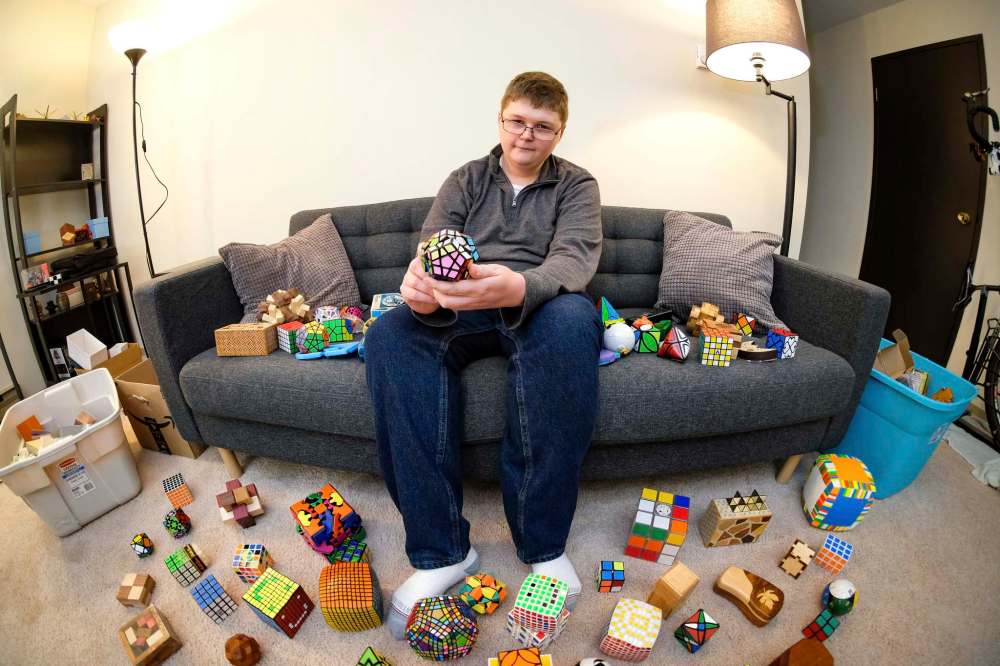
Also laid out on the table in front of us are a dozen or so trick boxes: metal and wooden devices that require the solver to access a hidden compartment by moving pieces up, down, back and forth. How difficult are they? One Chinese-manufactured paradox, shaped like a cross and comprised of dozens of sliding panels, has had its owner perplexed for months. “Uh, that would be a bit disrespectful to the designer, don’t you think?” Haché remarks, when a reporter suggests a hammer would do the trick, just as easily.
Invented in 1974 by Hungarian sculptor Ernö Rubik, the Rubik’s Cube was first sold commercially 40 years ago, after Rubik secured a deal with the Ideal Toy Corp. to market his creation world-wide. The Rubik’s Cube, inducted into the National Toy Hall of Fame in 2014, was an out-of-the-box success, selling more than 200 million units in its first three years of existence. But unlike pet rocks, mood rings and Crocs, it never fell out of fashion. As a matter of fact, the Rubik’s Cube, which spawned scores of imitators, might be more popular now than it ever was, Haché contends, thanks to the internet, where neophytes can access umpteen videos showing them how to solve what they’re holding in their hand.
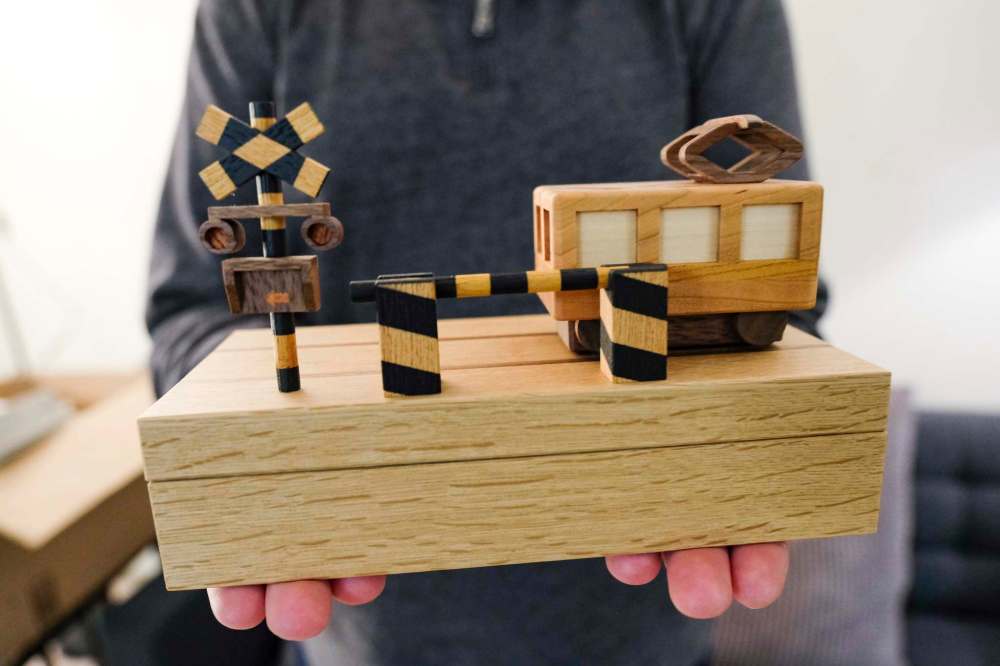
“There’s also the World Cube Association that was formed in 2003,” he continues, citing the governing body that oversees conventions and international competitions where attendees go head-to-head to determine whose fingers are the fastest. “We hosted our own last October, the Winnipeg Open, that drew participants from as far as North Dakota and Minnesota. Besides solving cubes with different dimensions, 3x3x3xs all the way up to 7x7x7xs, there were also challenges that required people to do so one-handed or blind-folded.” (Ha ha, it sounded like you said folks were solving Rubik’s Cubes with their eyes closed.)
“That’s right. I think the winning time was something crazy like 18 minutes, but that included how long the winner took to study the cube before putting on his blindfold. After that it was all muscle memory,” says Haché, who has attended WCA-sanctioned events all over the globe, including ones in England, France, Washington, D.C. and Seattle, and also traveled to Hong Kong at the age of 16 with his grandparents, expressly to go shopping for puzzles.
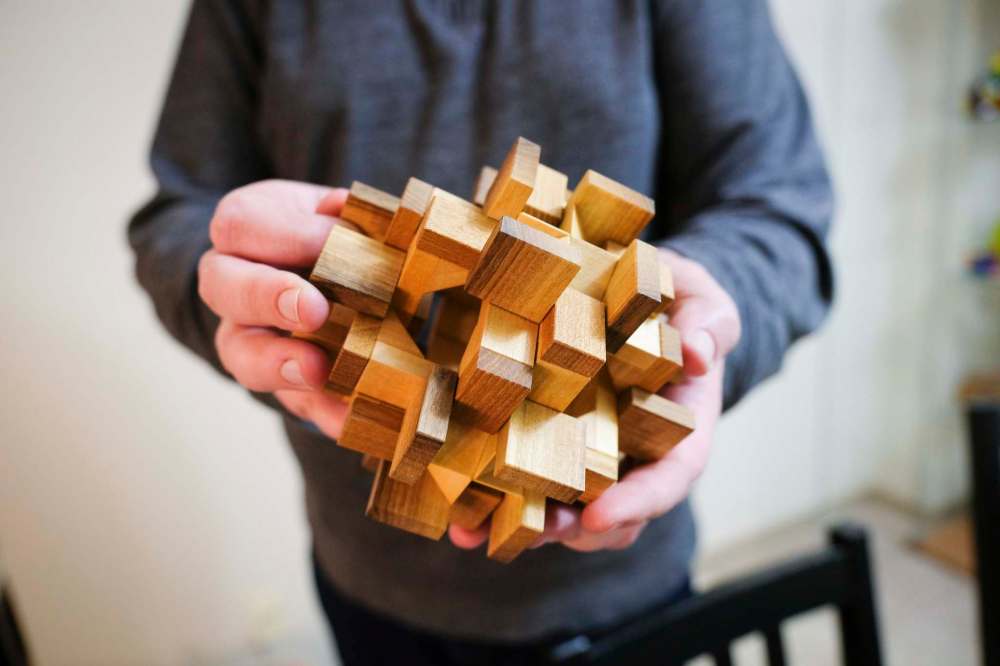
Braden Ganetsky, a 21-year-old University of Manitoba engineering student and fellow Winnipeg Puzzle Club member, guesses he was 15 when he picked up a Rubik’s Cube for the first time.
“I actually started a trend at my high school, Gray Academy, and although the trend eventually died down, it definitely didn’t die down for me,” he says.
True that: after spending two years getting the hang of three-dimensional puzzles, Ganetsky, a math whiz, came to the conclusion that what he really wanted to do was design and build his own. With the assistance of CAD software, he did just that, to the point where one of his creations — a six-sided contraption comprised of over 100 triangular and diamond-shaped pieces he dubbed the Weird Skewb — can be purchased through an online store based in Russia.
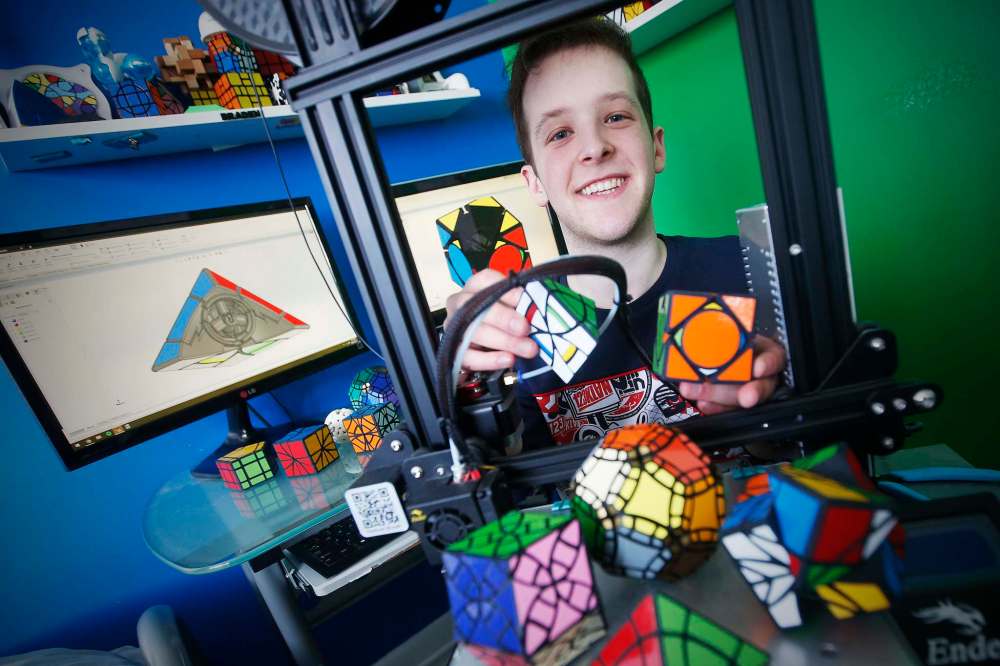
“I’ve made a bit of money doing this, not a whole lot, but enough to cover the cost of the 3D printer I have in my bedroom,” he says.
Ganetsky laughs, remarking whenever he tells people he meets for the first time about his hobby, their usual reaction is, “Oh yeah, I solved a Rubik’s Cube once.”
That’s when he explains that not only has he solved his share, too, he also owns in the neighborhood of 250 Rubik’s Cubes. And that he enjoys designing and printing his own puzzles and can rattle off geometric terms such as rhombus truncated, icosahedron and polyhedron like nobody’s business.
“At that point, they usually get this weird expression on their face and say, ‘OK, I have to go now.’”
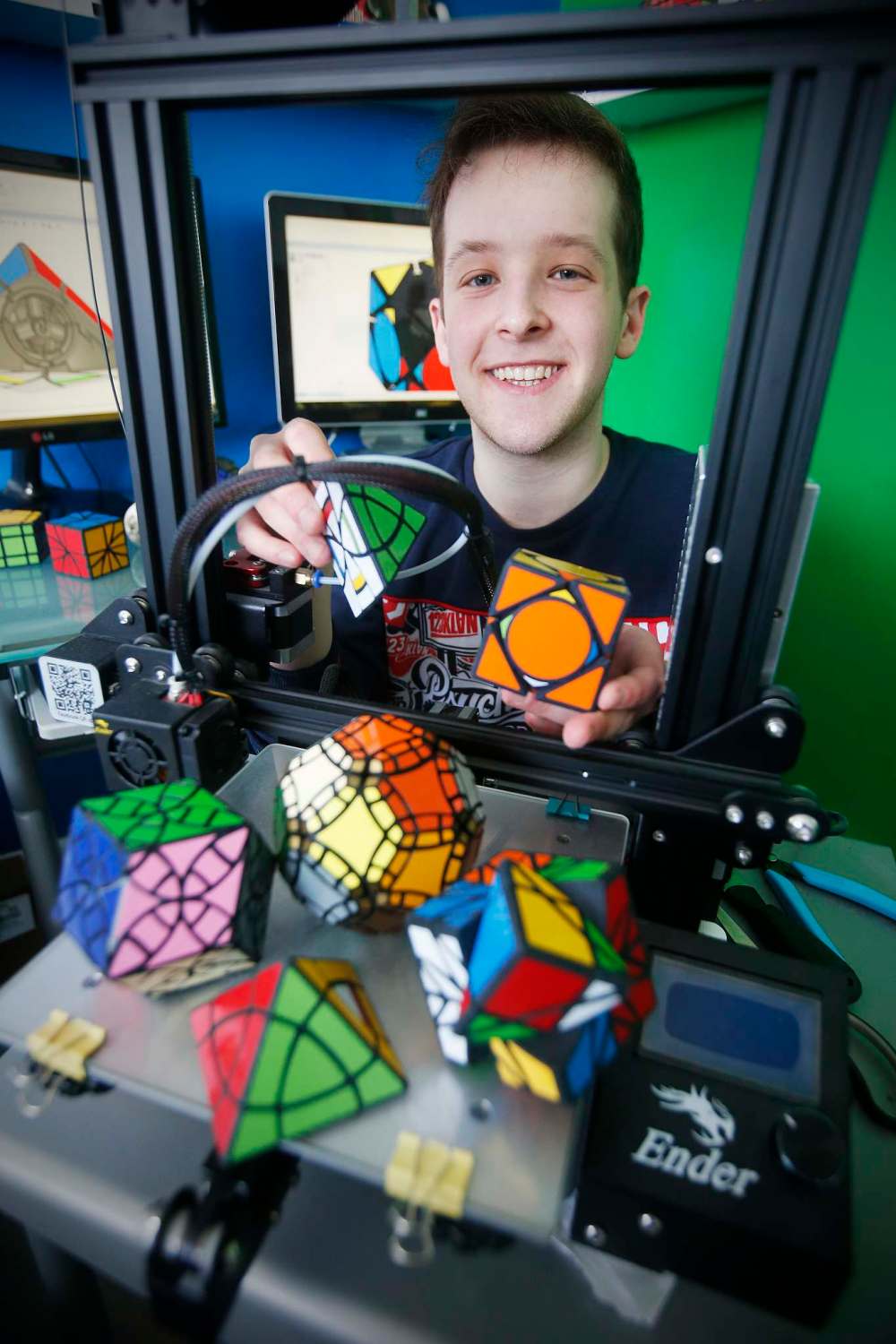
Keith Wierckx was attending kindergarten when one of his classmates began letting him play with his Rubik’s Cube on the bus on the way to school. After he found one at home that used to belong to his older brother, he sought advice how to solve it from one of his uncles.
“He gave me a few tips but because he wasn’t the best teacher in the world I ended up going on YouTube instead,” he says, a smile crossing his face.
A quick study, Wierckx, now 10, has attended speed-solving competitions in Minneapolis, Denver and Vancouver. In June, he’ll head to Toronto to try his luck in the WCA North American Championship, for which he successfully qualified a few months ago after solving a Rubik’s Cube in 1’05”, five seconds under the cut-off, a tad slower than his personal best time of 53 seconds.
“Max Park is going to be there and I’m really excited about getting the chance to compete against him,” he says, referring to the WCA’s 18-year-old wunderkind who once solved a standard, 3x3x3 Rubik’s Cube in a shade less than five seconds and holds the world record for a one-handed “solve,” 6.82 seconds.
“I’m not sure how I’ll do but it’s going to be amazing to be in the same room with all these super-fast cubers.”

His mother Cathy says she often wonders if her son even knows he has a cube in his hands, when he’s watching TV and flipping pieces around without ever glancing down.
“I’ve heard from others it can be a good stress reliever and I truly think that’s the case with him,” she says, noting there’s another side to his preferred pastime that proved a big hit at a get-together a while back.
“Last year we had this big family reunion and one of the things we did was hold a talent show. When it was Keith’s turn, he stood at the front of the room telling jokes while his aunt handed him puzzle after puzzle, which he would solve in a matter of seconds, then hand back to her without missing a punchline. It was pretty amusing.”
For more information on the Winnipeg Puzzle Club, go to Facebook.
david.sanderson@freepress.mb.ca
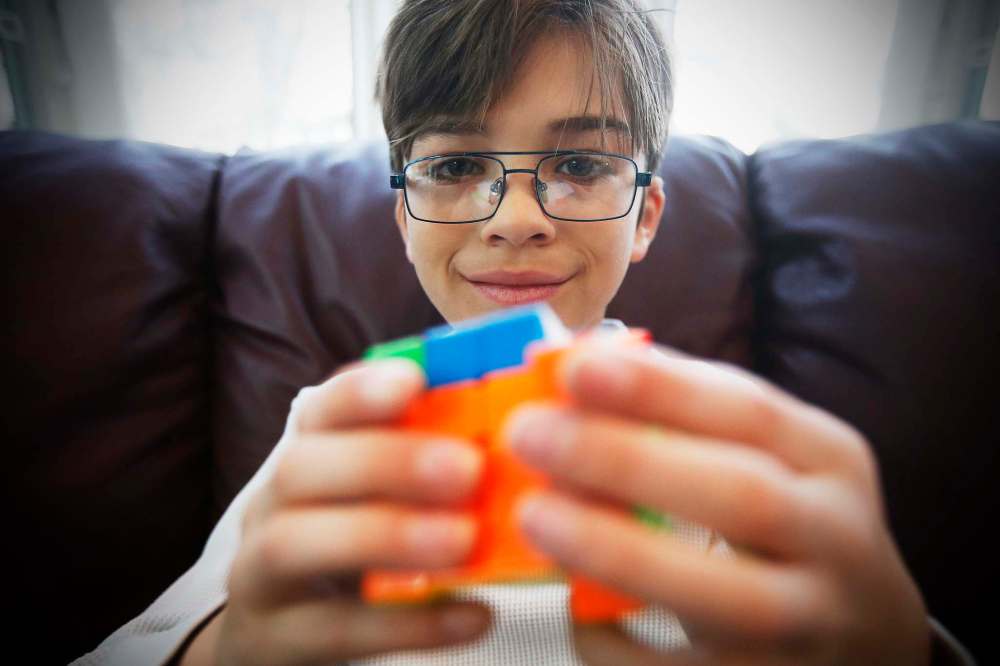
Dave Sanderson was born in Regina but please, don’t hold that against him.
Our newsroom depends on a growing audience of readers to power our journalism. If you are not a paid reader, please consider becoming a subscriber.
Our newsroom depends on its audience of readers to power our journalism. Thank you for your support.





